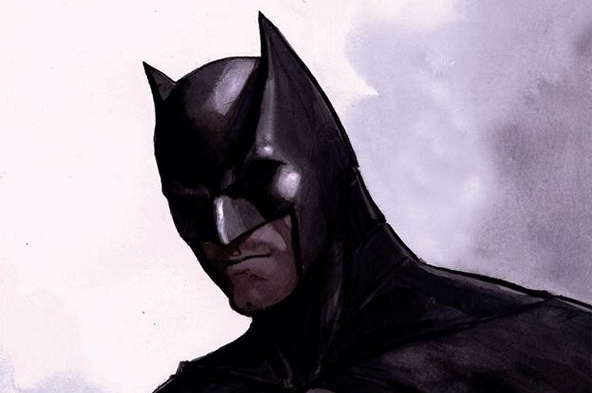Rampant sexism and stale jokes make for a tired and tiring Batman book

While there are costs to embracing the idea that there can be multiple universes, a lot of comics publishers have wisely leaned into the idea that different versions of the same character can exist at the same time without conflicting with one another. Particularly when it comes to tentpole characters, it means that there’s a Batman out there to suit every taste. Like Batman: White Knight, Batman: The Dark Prince Charming (DC) presents a version of Gotham and its most famous citizen that exists outside of the main continuity. Where White Knight started strong in the first issue but squandered a lot of interesting opportunities, The Dark Prince Charming displays its weakness immediately.
Written and drawn by Italian artist Enrico Marini, The Dark Prince Charming feels at first like a very standard Batman story, though Marini claims in his introduction to be aiming for something a bit more “noir” than that. It’s a mistake to think that all Batman stories are automatically crime or noir, but this is the least of the missteps Marini makes.
The book is a joy to look at. There are several double-page spreads and large panels that evoke the same kind of damaged and aging art-deco city that the best episodes of Batman: The Animated Series portrayed. Marini doesn’t scrimp on backgrounds, and it lends the whole book a sense of heft and reality that isn’t common in comics, especially in monthly titles. Marini’s style is very painterly, with beautiful, carefully chosen color palettes to draw out different emotional responses from the reader, and his grasp of action and character is strong. The book is solid, visually. But none of that can make up for Marini’s weak, outdated writing.
It’s a bit mind-boggling that DC editorial let this book go like this, and raises the question of what it looked like before editors touched it. The dialogue isn’t strong, but as with any media crafted or translated into the writer’s non-native language, there may be elements that get lost in translation, especially jokes and colloquialisms. The larger problem is that the dialogue is also so casually, unrepentantly, and unapologetically sexist that it completely dissolves whatever suspension of disbelief the reader may have arrived with. Especially while Tom King is managing to make a compelling Batman and Catwoman love story in the main Batman title and Marguerite Bennett continues to create a compelling all-female Bombshells universe, there’s no excuse for Marini’s absolute hack job on both Selena and Harley. He’s managed to turn them from compelling, competent, independent characters into churlish, unpredictable children who serve only as half-naked eye candy and “women are crazy” punchlines for both Bruce and the Joker.
It doesn’t help that the core plot relies on the tired and insulting trope of a female drug user trying to blackmail a rich man, in this case Bruce Wayne, into paying her off by claiming to have his child. The story of Damian Wayne and Talia Al Ghul is a hard one to beat, and Marini is relying far too much on misogyny to carry his plot to even come close to competing with it. At least the title is honest: Marini has leaned into some of the worst parts of the Batman mythos, turning him into a distant but honorable man, tortured enough to be interesting while he saves women because they’re clearly incapable of saving themselves.
Even at $12.99, this volume is overpriced. There are just over 60 pages, and since the average monthly issue right now is around 20 pages and $3.99, it’s actually more expensive than three separate issues. It’s also the first of two books, and even as a hardcover it feels thin; most trade paperbacks are at least twice as big. This feels very much like an attempt to get the first half out while Marini finishes up the second, and it’s just not worth the money.